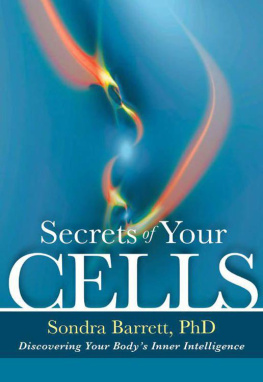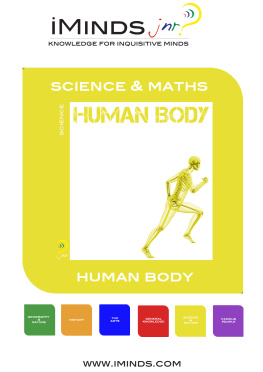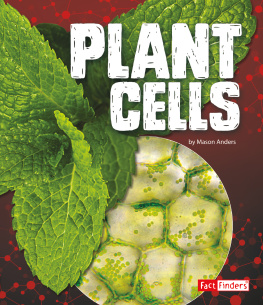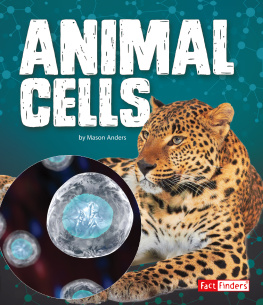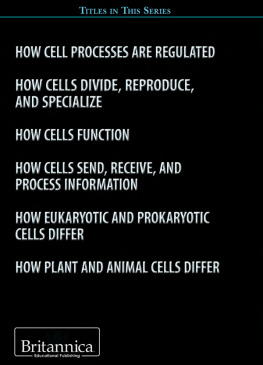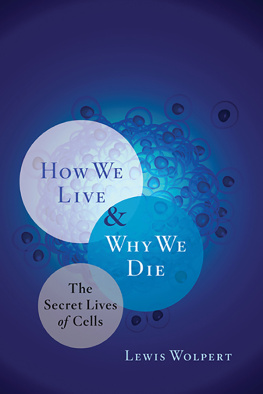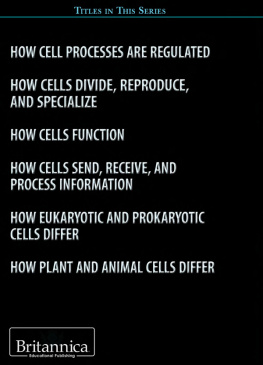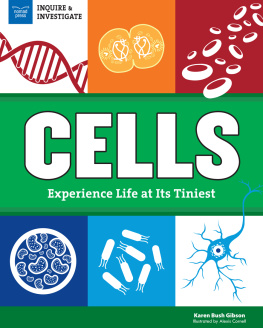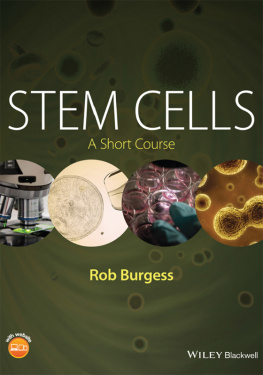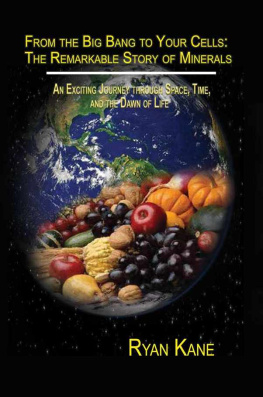Secrets of Your
CELLS
Discovering Your Bodys Inner Intelligence
Sondra Barrett, PhD

To Alvaro and Paulo, who wanted to see
and know what was inside, and whose lives
helped illuminate my sacred path
and
to my children, Ted and Heather,
who illuminate my heart and soul,
filling me with love
The best way I have to honor God
is to understand the secrets of Nature.
DR. MICHIO KAKU theoretical physicist
Contents
Illustrations
Figures
Color Plates
3.a. Earth, round, feminine
calcium phosphate associated with Capricorn
b. Water, fluid, feminine
calcium fluoride associated with Cancer
c. Air, linear, masculine
sodium phosphate associated with Libra
d. Fire, illumination, spirit, masculine
silica associated with Sagittarius
Preface
Everyone who is seriously involved in the pursuit of science becomes convinced that a spirit is manifest in the laws of the universea spirit vastly superior to that of man.
ALBERT EINSTEIN
T he voyage that led me to bridge the realm of the biological cell with the realm of the soul was a trek that required the repeated breakdown of my ego and beliefs. It began more than forty years ago when I obtained a PhD in biochemistry. Back then, I was intrigued by the chemicals of life. They were identifiable, objective, and quantifiable; plus, I believed that if we could locate chemical abnormalities, we could fix anything in the human body. Later I pursued immunology and hematology, which took me into the cellular universe.
As I explored cells under the microscope, my experience became more than cerebralI was enchanted by what I was seeing. I began photographing that magical microscopic world of living human cells (see in the color insert for my first photograph).
While the world of cells captivated me in a mysterious way I didnt yet fully understand, I was very much in an intellectual mode. I thought that unless something could be measured and proven, it wasnt real. It was an illusionif not a delusion. In my mind, analysis and statistics told the true story; there could be no ambivalence about the conclusions. However, the more experience I gained through my research, the more cracks appeared in my rigidly held convictions. I saw people die who shouldnt have according to their biological measurements. I met children with aggressive leukemia cells (cancer of the blood) who contradicted the predicted course of their disease and were living much longer than they should have. People didnt fit so nicely into statistical categories and prognostications. They couldnt be easily measured like a test tube of defined chemicals.
One eighty-four-year-old woman, Marjorie, with acute leukemia stopped responding to chemotherapy. Her doctors gave her just a few months to live. Marjorie, however, had other plans: a grandchild was graduating from college and her sixtieth wedding anniversary was coming up. She needed to stay alive for these events. And she didwithout chemo. In fact, she remained with the important people in her life for two more years.
This made no sense to me. I was stymied. What kept her alive? My shell opened just enough to realize that healing, life, and death could not be placed simply into an analytical framework, and I could no longer depend solely on the comfort of scientific measurement and predictability.
Then the father of a boy with leukemia asked me to photograph his sons cancer cells to aid in a visualization practice. The boy would imagine each healing cell as a kind of Pac-Man who sought out and destroyed the cancer cells just as it ate pellets in the arcade game. This was a time when visualization and imagery were found only at the fringes of mainstream medicine, but the concept took hold in my imagination. I thought that if kids could see what healthy cells looked likeand those cells were bigger and stronger than the cancer cellsthey might be able to use their minds to heal their bodies. Sometimes I would suggest that they imagine their cancer cells as dust and their healing system a vacuum cleaner.
Soon I began giving weekly inner space slideshows at the clinic. I simply pointed out healthy and abnormal cells and what the molecules werewith no further explanation. It became clear to me that to the children it didnt matter what these images meant to a scientist. There was something inherent in them that people of all ages enjoyed and that many experienced as transformative.
I formed a special bond with a five-year-old boy named Alvaro, who asked to see the slides over and over again. I sometimes invited him and his sister to share the weekend with me and my children, and we would sit together and draw cells or go to the park. Then suddenly, Alvaro began to go downhill after being in remission for more than a year. His speech faltered and walking became difficult. What could I do for him now?
I remembered learning a Gestalt psychology strategy in my own therapy sessions to express difficult feelings (hitting a pillow, yelling) and was inspired to try it with Alvaro. I asked if something was upsetting him and was surprised when he immediately answered that he was really angry at his stepfather. He told me he believed his real dad had been pushed out of the home by this man. In my innocenceuntrained as a Gestalt therapistI told him to show how angry he was by pounding on the sofa. He didnt hesitate and beat on the sofa pillows for quite some time.
A few days later, Alvaro began to improve. While it could have been the new meds he had been given that caused the change, to me, it seemed a miracle. I could no longer be certain that it was only the medication that turned his disease process around. This marked another major turning point in my thinking and beliefs about medicine. It was at this time, fearing Alvaros death, that I sought the help of a clinical psychologist. During my first therapy appointment, the psychologist lit some sage to purify the space, something I had never experienced before. I immediately felt more clarity and relaxation than I had in a long time. It was clear that this man was more than meets the eyehe was, in fact, a shaman. He brought me to a deep place of trust, and I knew I needed his guidance in the big issues I was struggling with, which my scientific training offered no context for. I saw him as a therapist for several years before I committed to a year-long shamanic apprenticeship.
My work with this shaman was a true turning point. He helped me reframe my concepts about what healing is and the mental and spiritual dimensions that foster it. By going deep into my own healing journey, I began to explore my own role as a healer. During that potent apprenticeship year, I made my lifelong aspiration to bridge science and spirit in the healing process.
In the lab, my most significant clinical research was to explore how to recognize cellular characteristics that could lead to more accurate diagnoses and successful treatments of leukemia. Using the microscope to distinguish cellular identities and behaviors, I learned that white blood cells change shape and form as they grow and mature. As their forms changed, so did what they were able to do. Compared to the orderly and regular forms of normal cells, the expression of leukemia cells was chaotic. Here is a photomicrograph of myeloid leukemia cells, each having a different and abnormal shape (see ) when compared with the regular shape of normal myeloid cells.

